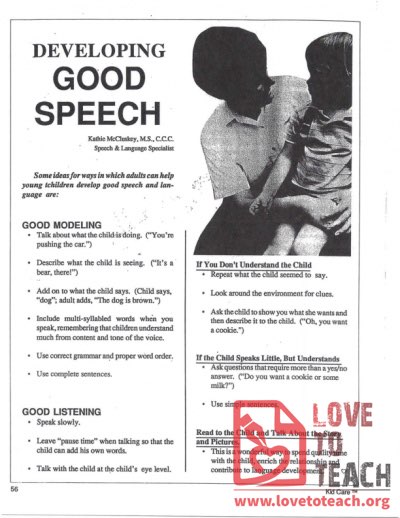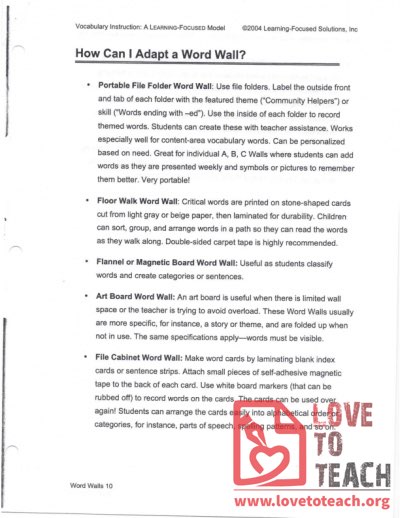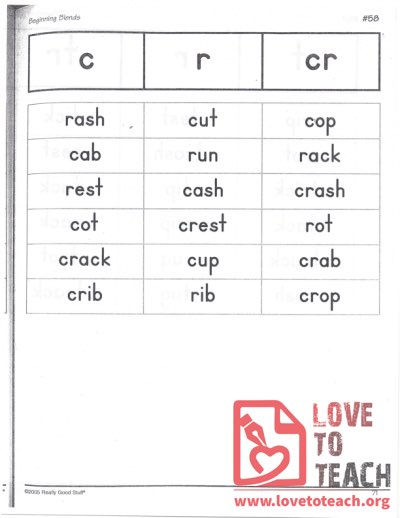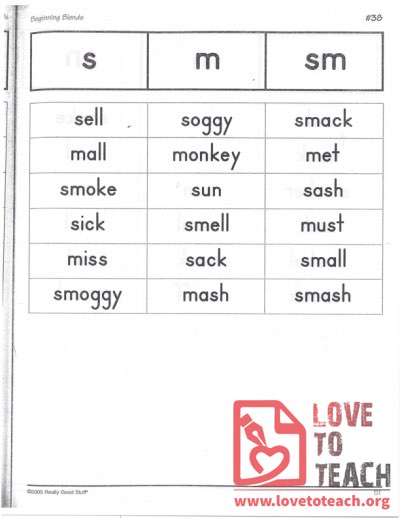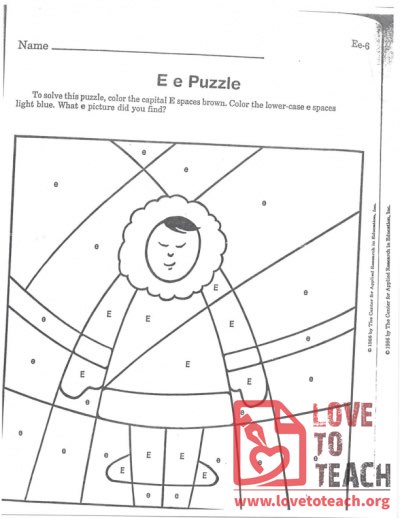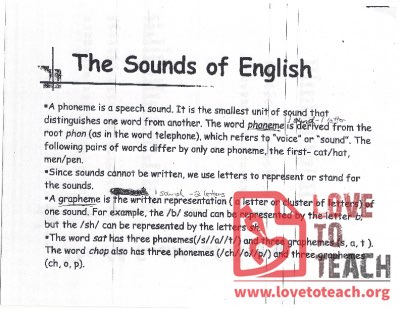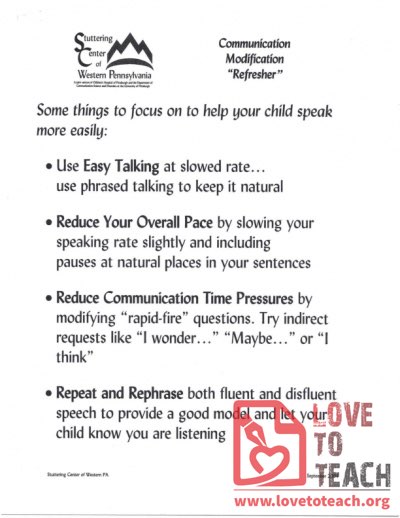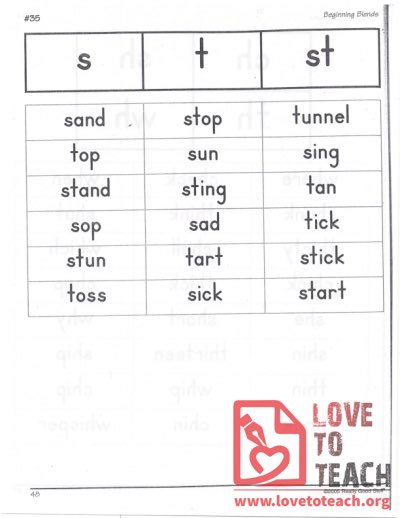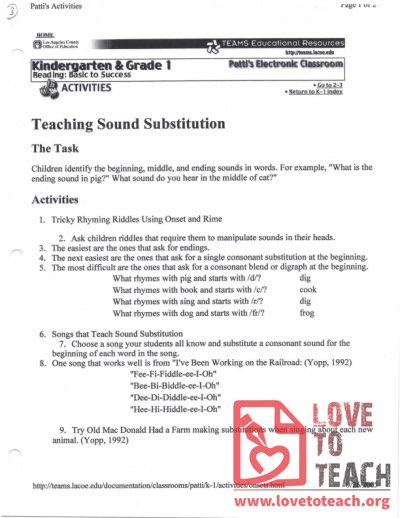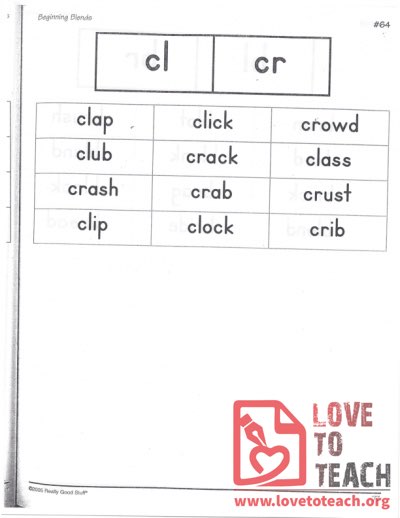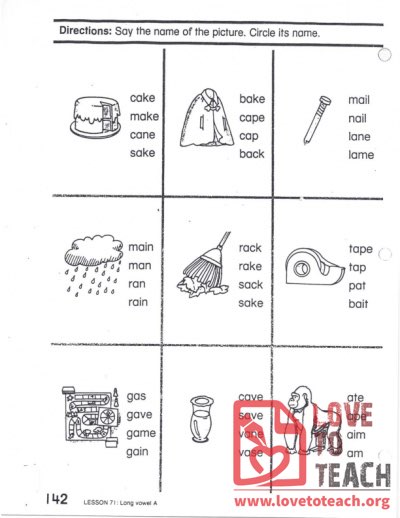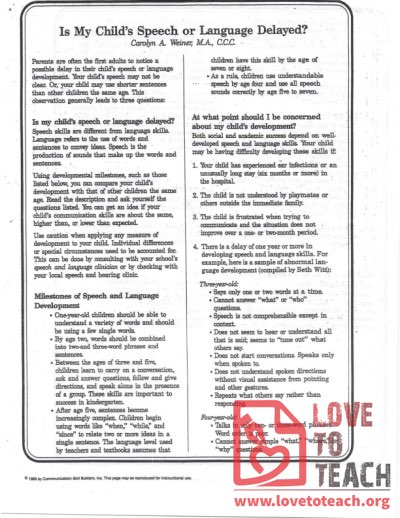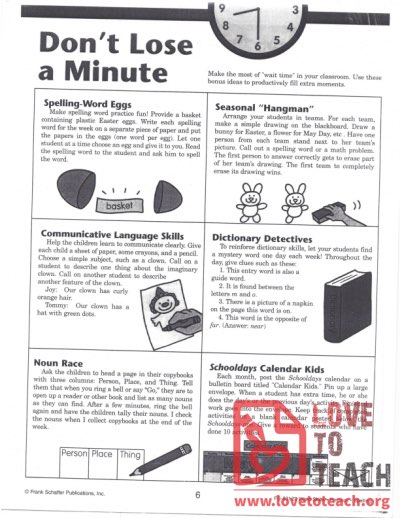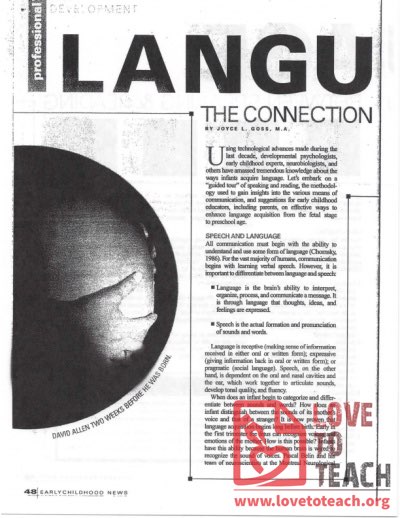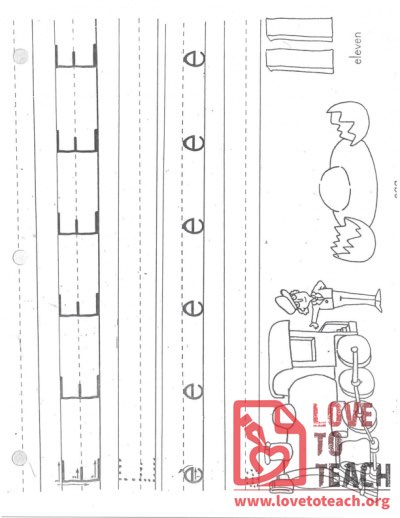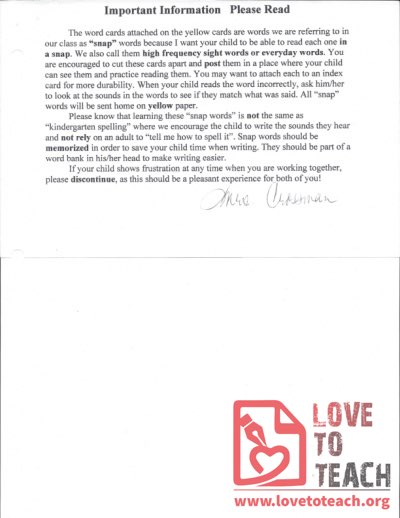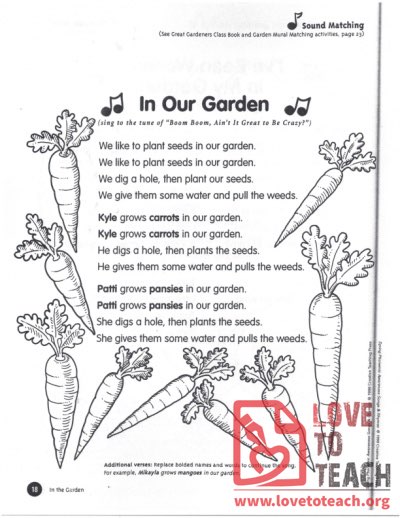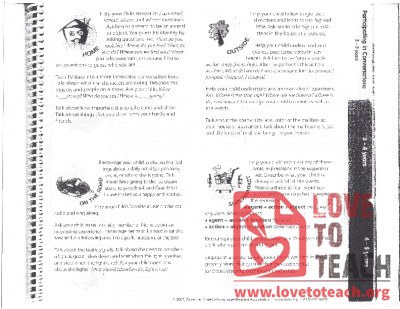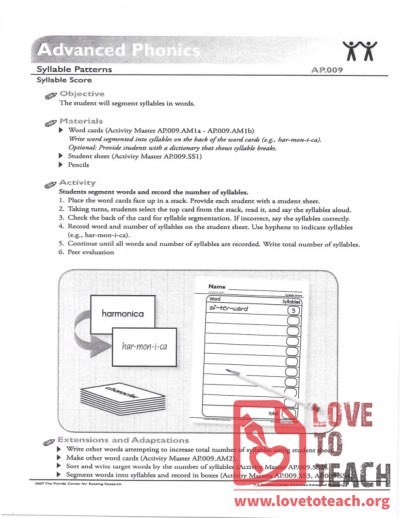Language Arts (381)
Whether you're focusing on comprehension strategies, literary analysis, or honing writing techniques, we provide a diverse array of materials to support your teaching objectives. From engaging literature guides to interactive grammar activities, our resources are designed to spark curiosity, inspire creativity, and cultivate a deep appreciation for the power of language.
Some ideas for ways in which adults can help young children develop good speech and language are.
Ideas for implementing a word wall: portable, floor walk, flannel or magnetic board, art board, file cabinet, clothes line, and thematic word walls.
Coloring activity for learning capital and lowercase "E" - color the uppercase spaces brown and lowercase blue to see the picture.
A phoneme is a speech sound. It is the smallest unit of sound that distinguishes one word from another. Graphemes are written representation of one sound, usually two letters. Also includes the 44 sounds of english (consonant and vowels)
Some things to focus on to help your child speak more easily: Easy talking, reduced pace and time pressures, repeat and rephrase
Children identify the beginning, middle, and ending sounds in words. For example, "What is the ending sound in pig?" "What is the sound you hear in the middle of cat?"
Say the name of the picture - circle its name: cake, cape, nail, rain, rake, tape, game, vase, ape
Children participate in a series of activities that help them realize words are made up of syllables. For example, "Can you count the syllables or the word parts in football?"
Is my child's speech or language delayed? Carolyn A. Weiner, M.A., C.C.C Parents are often the first adults to notice a possible delay in their child's speech or language development. Your child's speech may not be clear. Or, your child may use shorter sentences than other children the same age.
Make the most of "wait time" in your classroom. Use the bonus ideas to productively fill extra moments.
Using technological advances made during the last decade, psychologists, early childhood experts, neurobiologists, and others have amassed tremendous knowledge about the ways infants acquire knowledge. Let's embark on a "guided tour" of speaking and reading, the methodology used to gain insights into the various means of communication, and suggestions for early childhood educators, including parents, on effective ways to enhance language acquisition from the fetal stage to preschool age.
Trace the uppercase and lowercase "E" on the dashed lines. Color the engine, egg, and "eleven"
Snap words, also known as high frequency words: you are encouraged to cut these cards apart and post them in a place where your child can see them and practice reading them.
Sing to the tune of "Boom Boom, Ain't It Great to be Crazy" Includes additional verses
Worksheets for helping kids participate in conversation: at home, outside, on the road, and supermarket.
Card game: Students segment words and record the number of syllables.
Page 15 of 20

